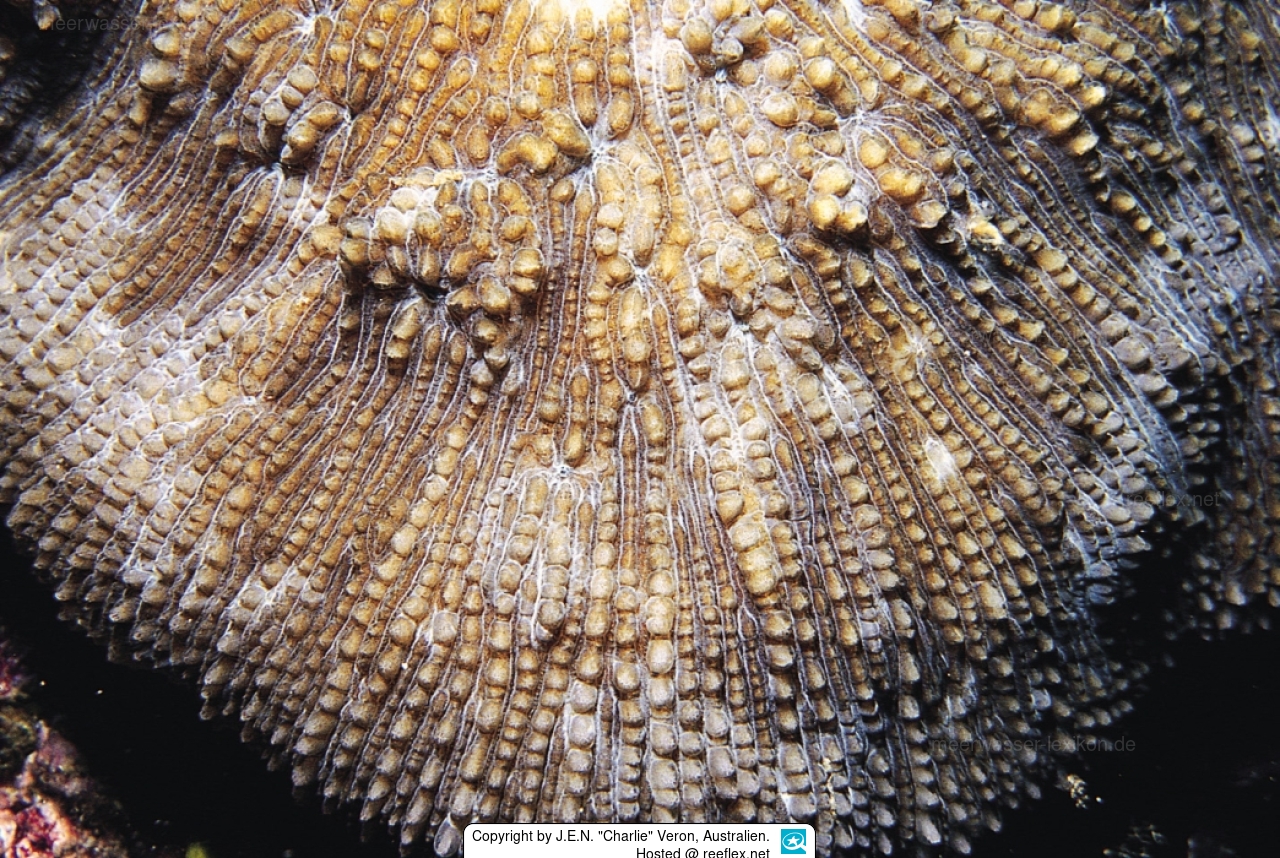Info
"Description: Colonies are flat and irregular in shape, with corallites mostly in the central area. An axial furrow can be seen in small specimens. Septa vary greatly in height.
Color: Brown or mottled, usually with white corallite centres.
Habitat: Deep protected environments.
Abundance: Usually uncommon.
Similar Species: Sandalolitha robusta."
Synonymised names
Döderleinia sluiteri Van der Horst, 1921 · unaccepted > junior subjective synonym
Doederleinia sluiteri Van der Horst, 1921 · unaccepted > junior subjective synonym
Halomitra (Podabacia) dentata Quelch, 1884 · unaccepted > superseded combination
Halomitra meierae Veron & Maragos, 2000 · unaccepted > junior subjective synonym
Parahalomitra dentata (Quelch, 1884) · unaccepted > superseded combination
Parahalomitra sluiteri van der Horst, 1921 · unaccepted > junior subjective synonym
Podabacia dentata (Quelch, 1884) · unaccepted > superseded combination







 Dr. John Edward Norwood "Charlie" Veron, Australien
Dr. John Edward Norwood "Charlie" Veron, Australien




